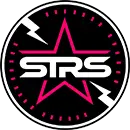A guy and a guitar. No simpler setup has ever existed in the history of audio engineering, right? Throw a microphone near the man’s lips, a Shure Beta 58 maybe, place your favorite condenser near the soundhole of the guitar, and hit that big red record button. Easy enough. But then you listen to what you have. That one mic on the acoustic isn’t offering anything in the way of a stereo image. And the vocals are bleeding through that sensitive condenser.
Your vocal track may have fared slightly better. The dynamic mic you placed is doing a good job rejecting the acoustic guitar. The nulls in the polar pattern were well placed, and the inherent nature of the dynamic microphone is much less sensitive to sound sources that are further from the diaphragm. A bit of eq, compression, and reverb should do the trick.
Overall, however, you are scratching your head wondering what you could have done differently. Enter the figure-8. If your gear locker includes a Bi-Directional mic, you are in luck. The side rejection of the Figure-8 can be employed in several miking techniques, not only to reject sound sources, but also to help create a stereo image.
If you’re not interested in an overly complex setup, but simply wish to place one mic on the vocals, and one on the guitar, you can utilize the rejection of the figure-8 to significantly reduce the amount of bleed from the vocals onto the guitar mic. With some careful placement, the capsule of the mic can be directed towards the guitar, while the null of the figure 8 can be directed upwards, rejecting much of the sound from the vocals. The result is a cleaner guitar track, which can be processed, and blended with the vocal track, with much greater control.
For a mono compatible stereo image, with flexible stereo width, the Bi-Directional mic, along with a cardioid condenser, can be used to create the Mid/Side technique. The Mid/Side array utilizes the pickup from the front and back of the bi-directional mic to capture a stereo image of the environment. Coupled with a cardioid mic aimed directly towards the source (in this case a singers mouth), the Mid/Side technique captures a very customizable sound.
In order to achieve the Mid/Side setup, simply set up your Figure 8 Mic so that the null of the figure 8 is aimed towards the sound source. Then, simply set up your second, cardioid condenser mic aimed directly towards the source, and you are ready to hit record. In order to convert your single Bi-Directional mic source into a stereo image, once you have your tracks captured in your DAW of choice, double your Figure 8 mic track. Next, pan the new tracks left and right, and flip the phase on one of them. Now you can adjust the stereo width by simply adjusting the pans of your Bi-Directional tracks.
Now, with your stereo acoustic track and some good rejection from your vocal track, you have a lot of flexibility in the mixing stage, and you have a great place to start with your guy and his guitar.
